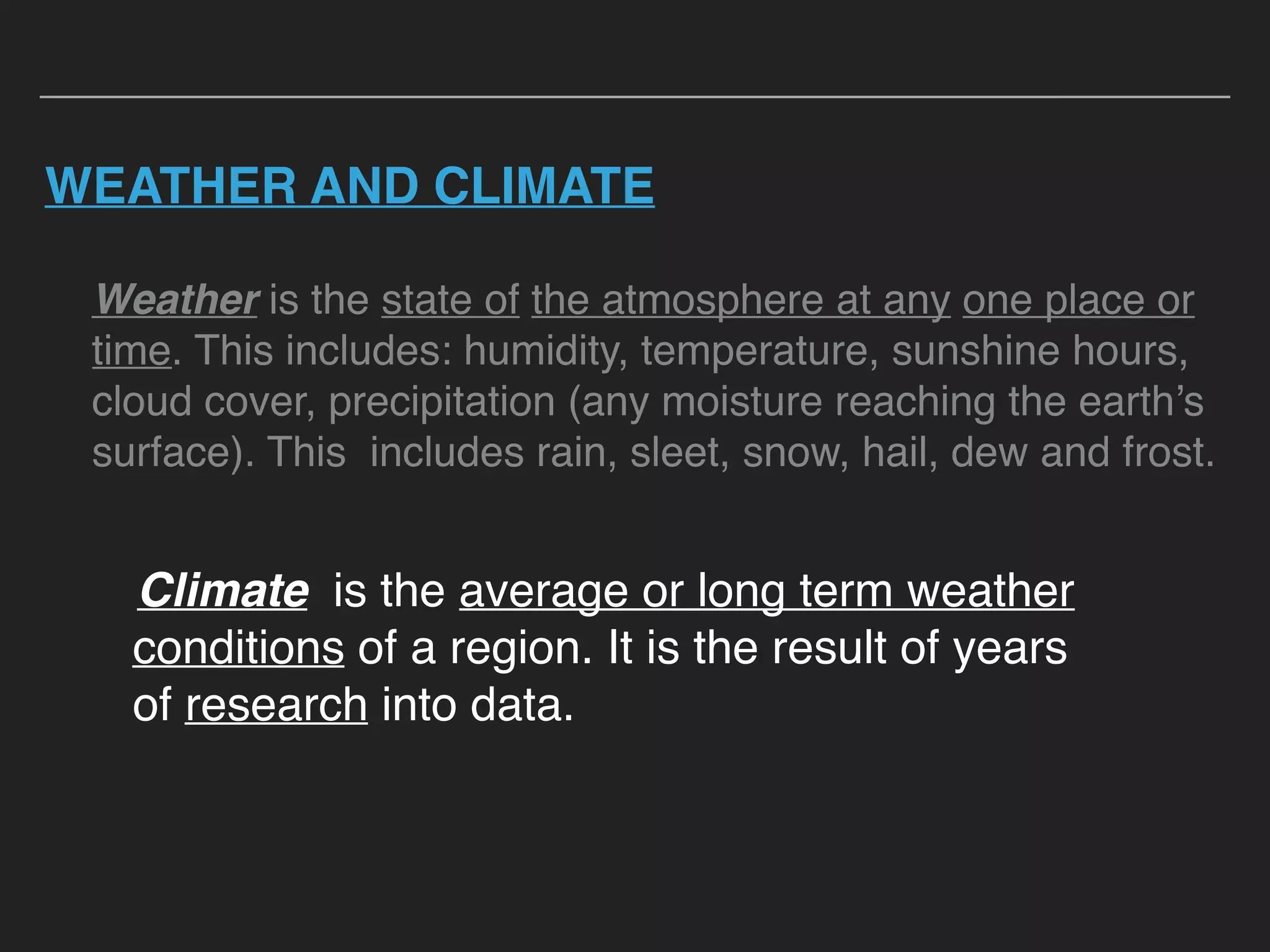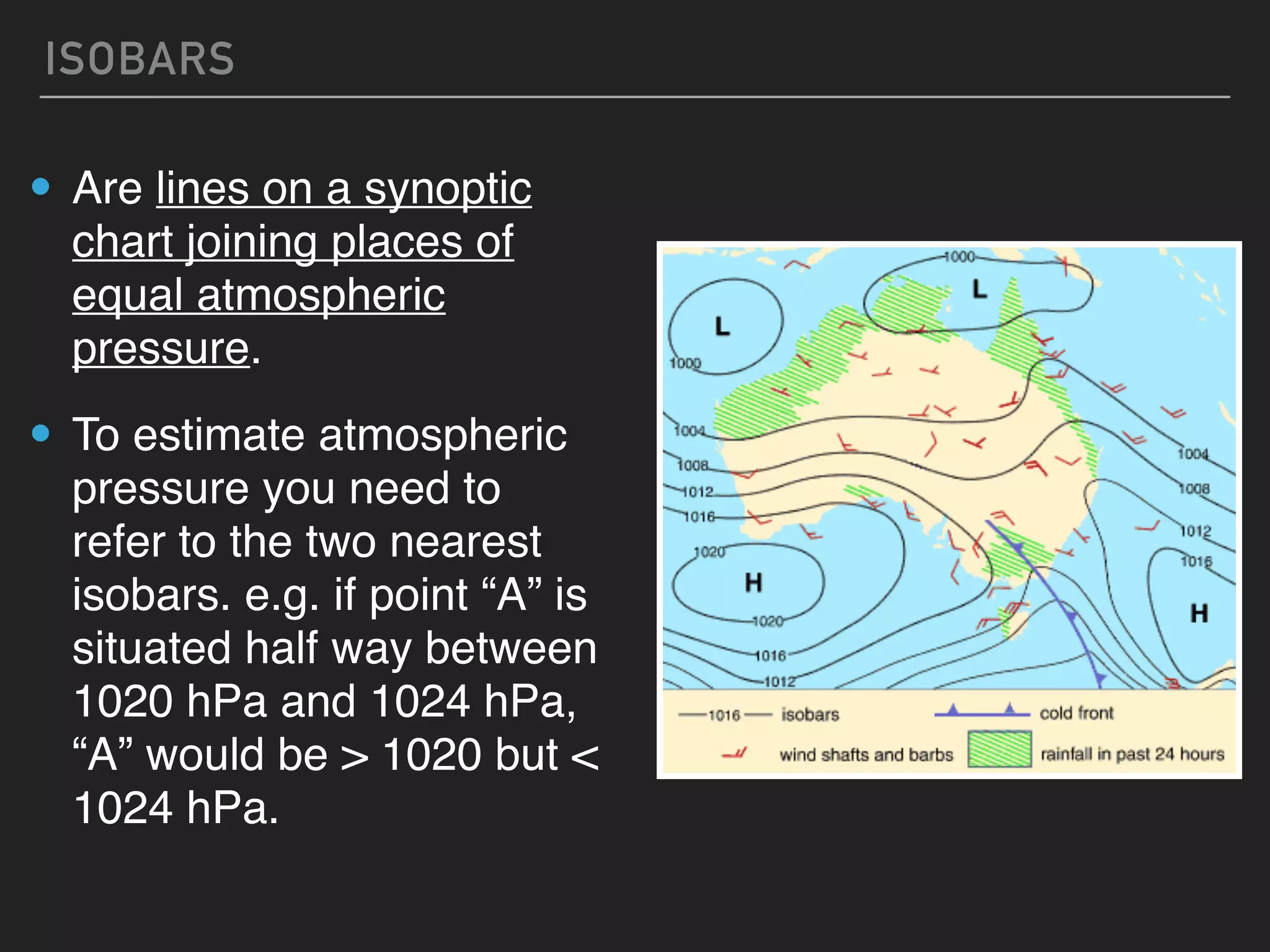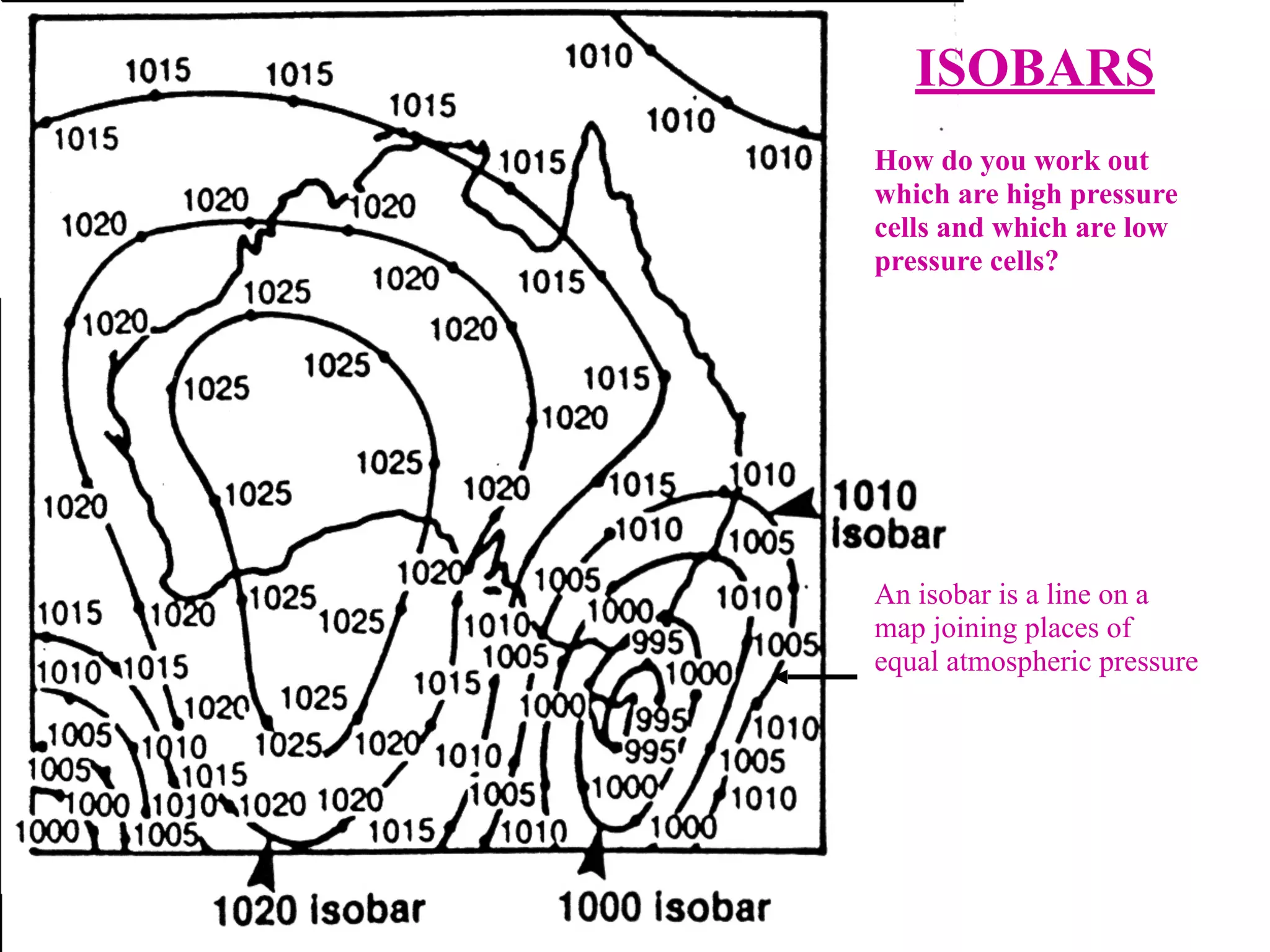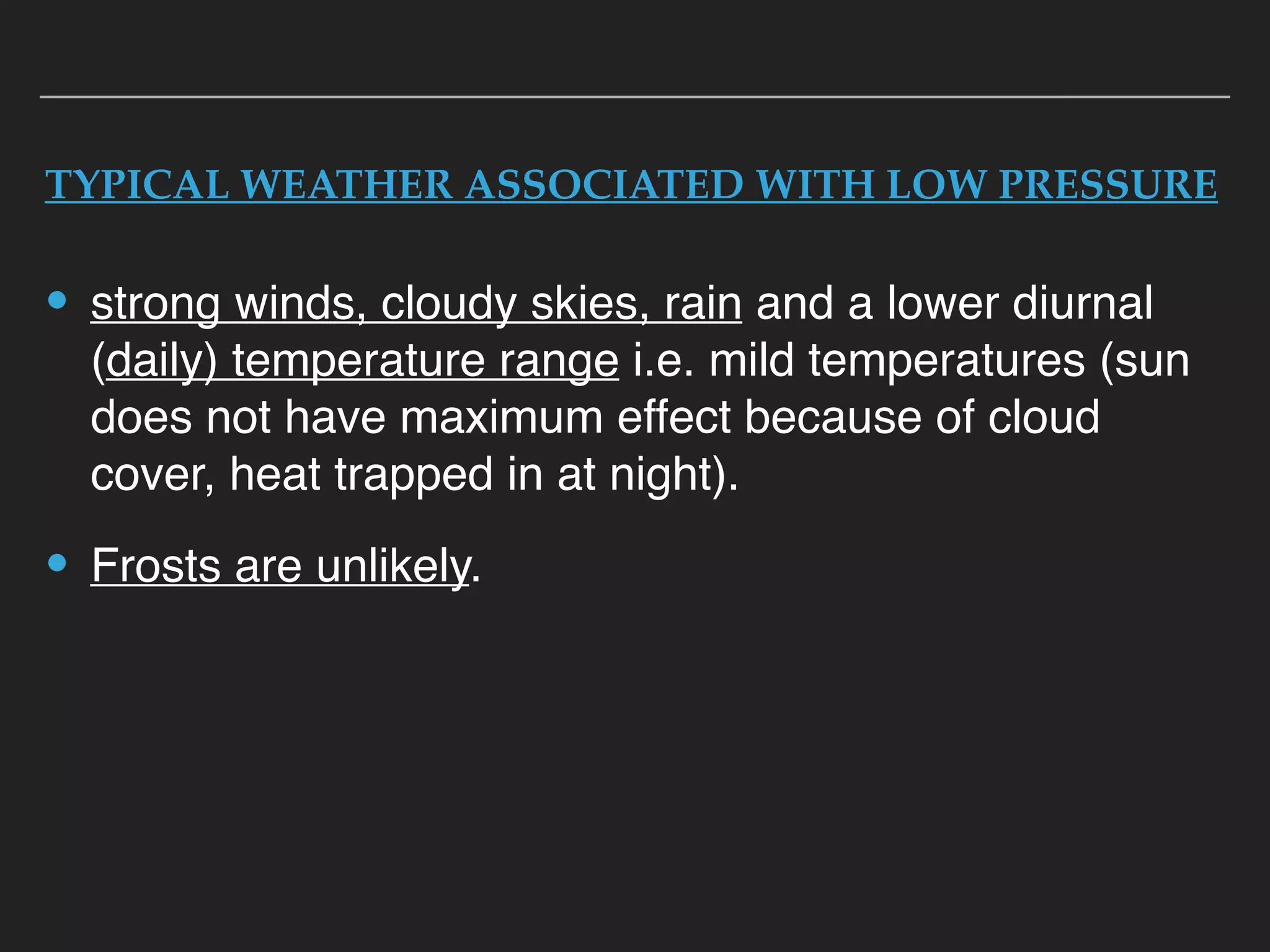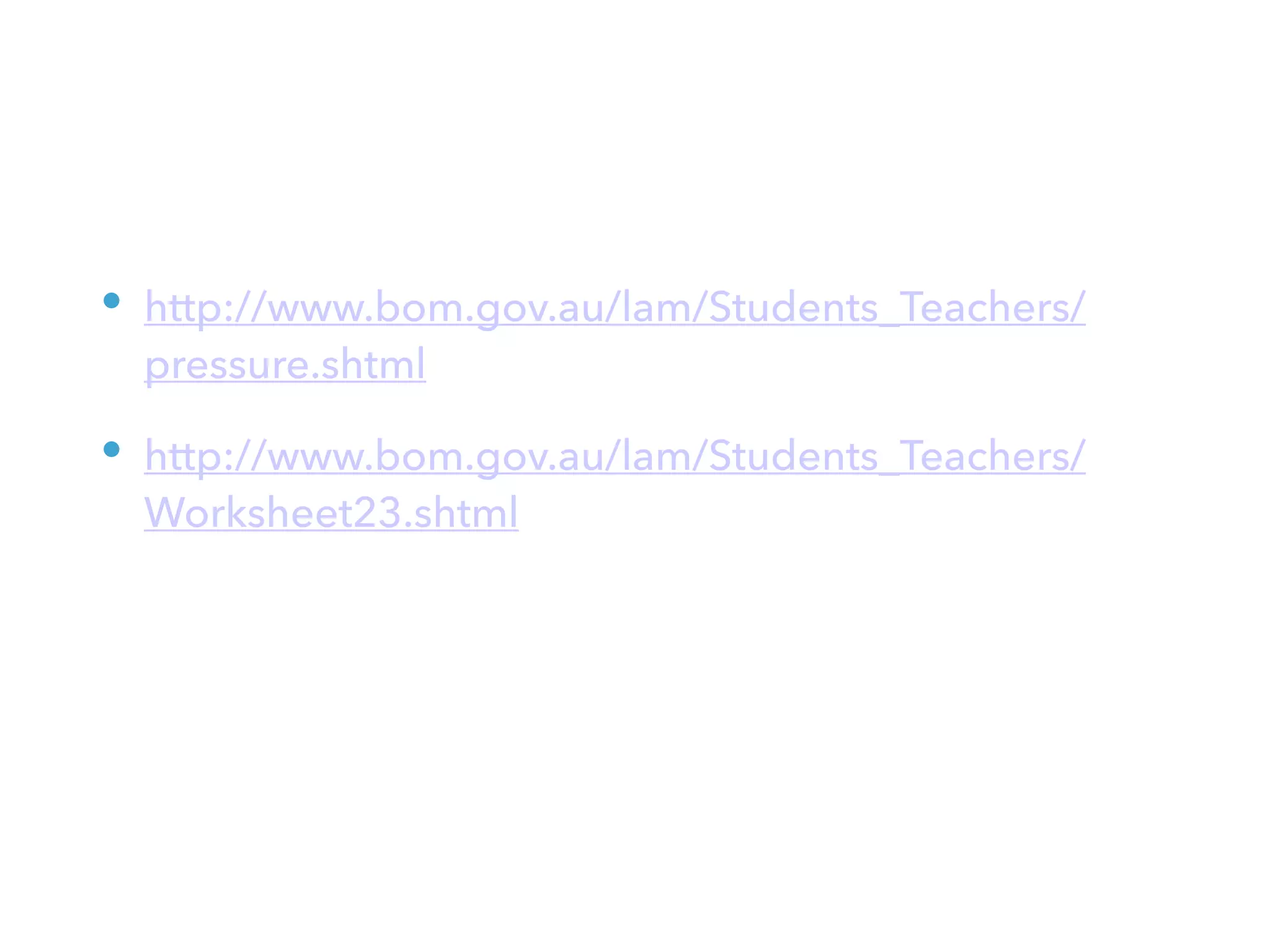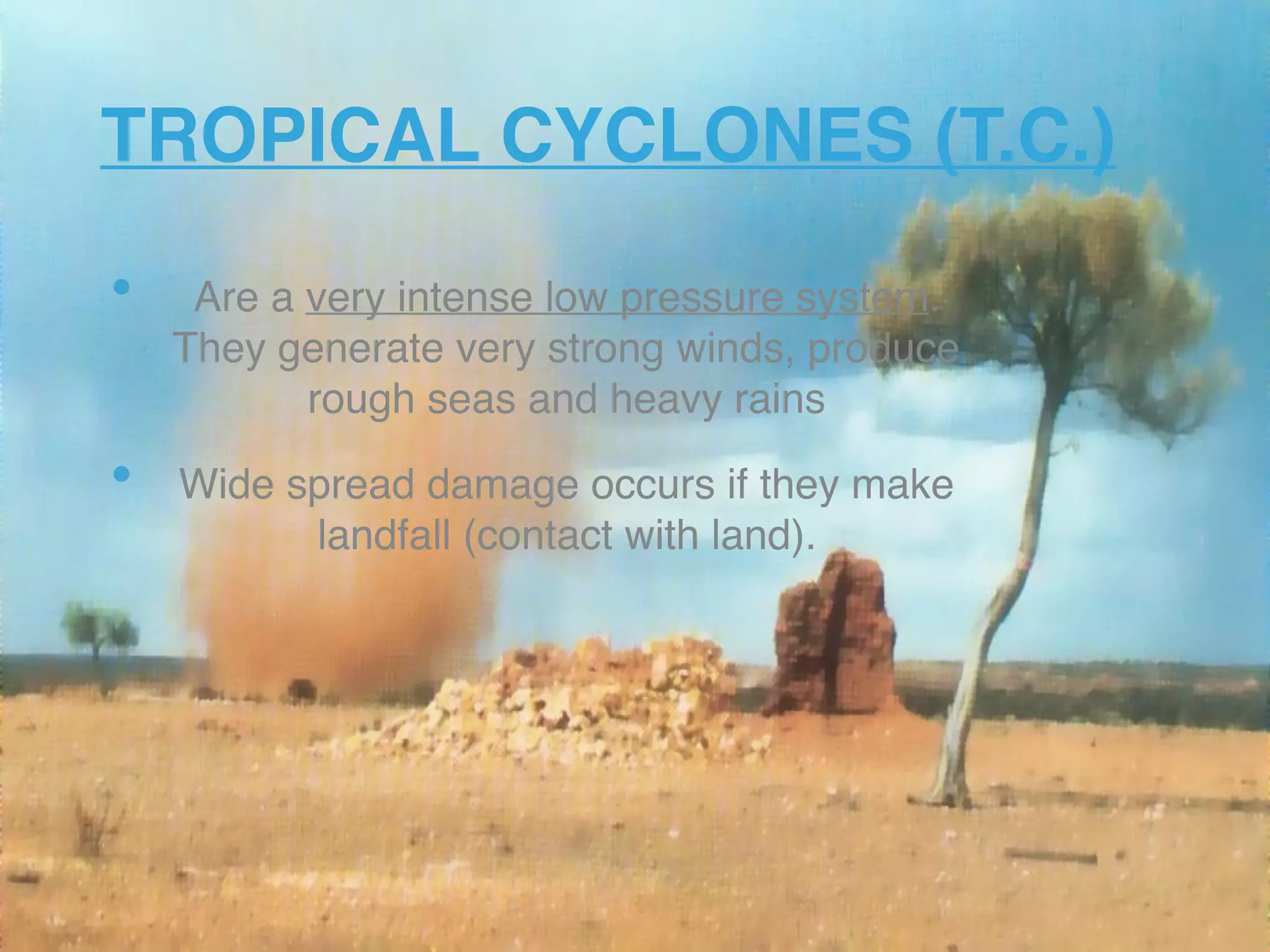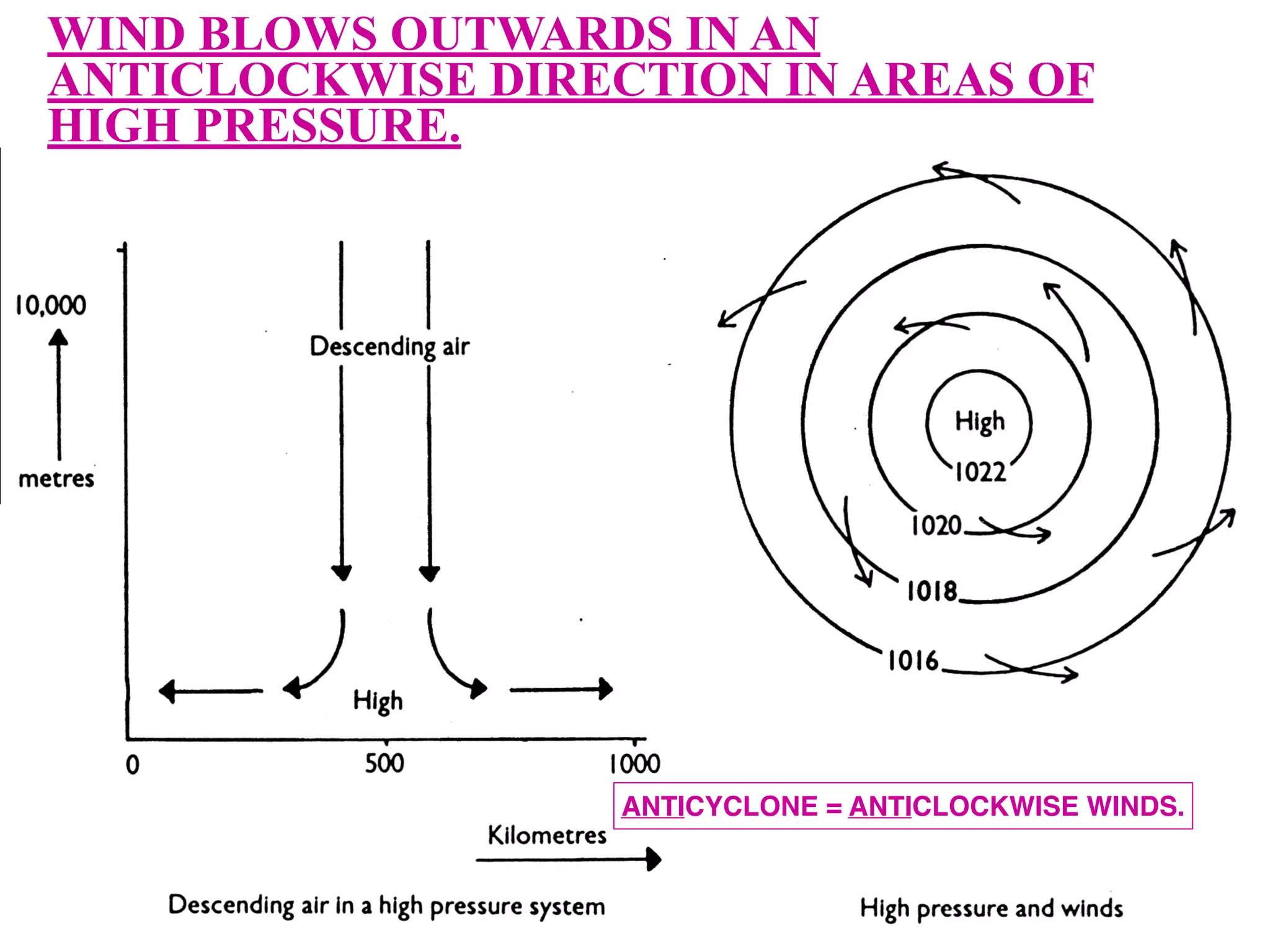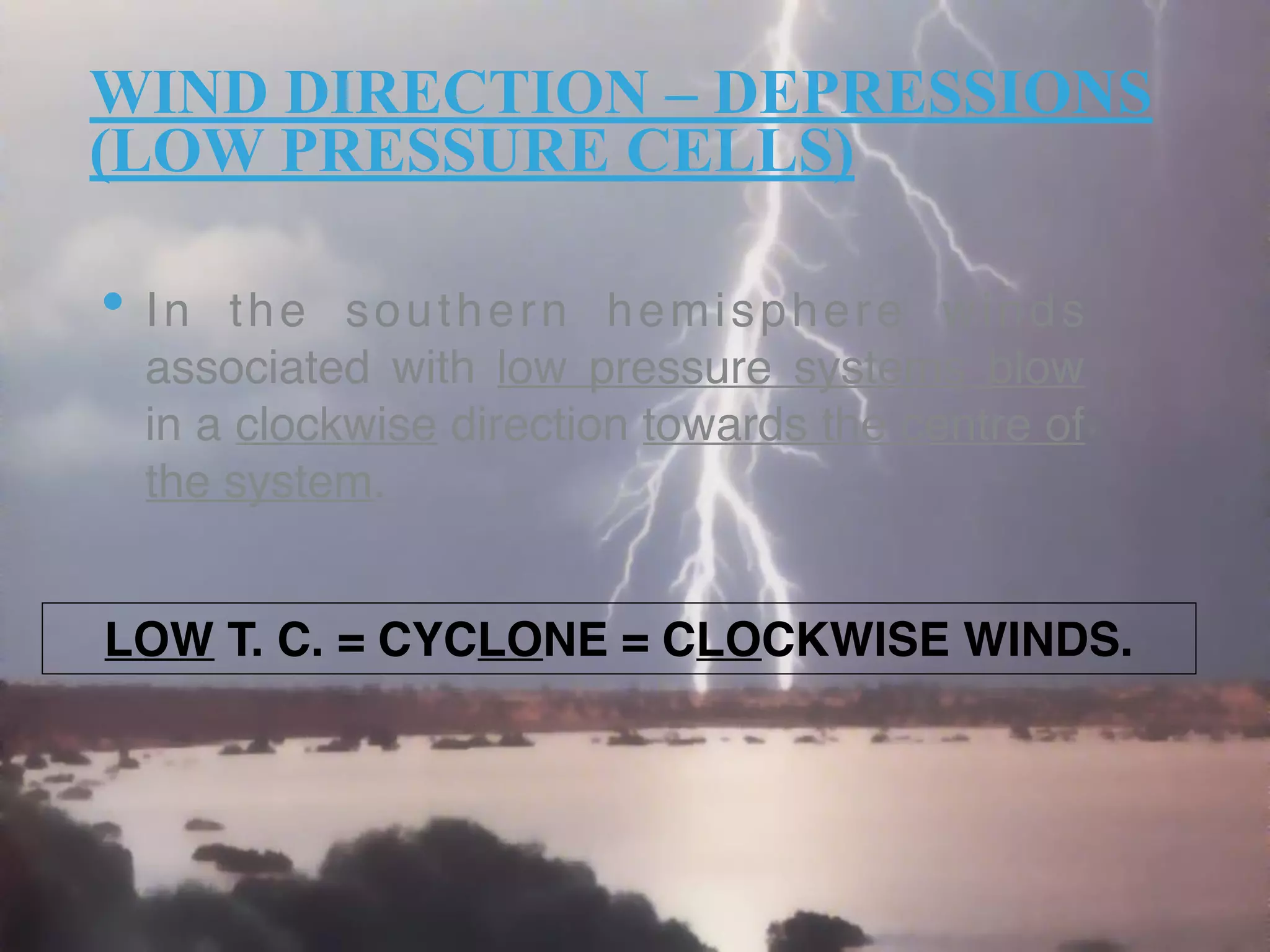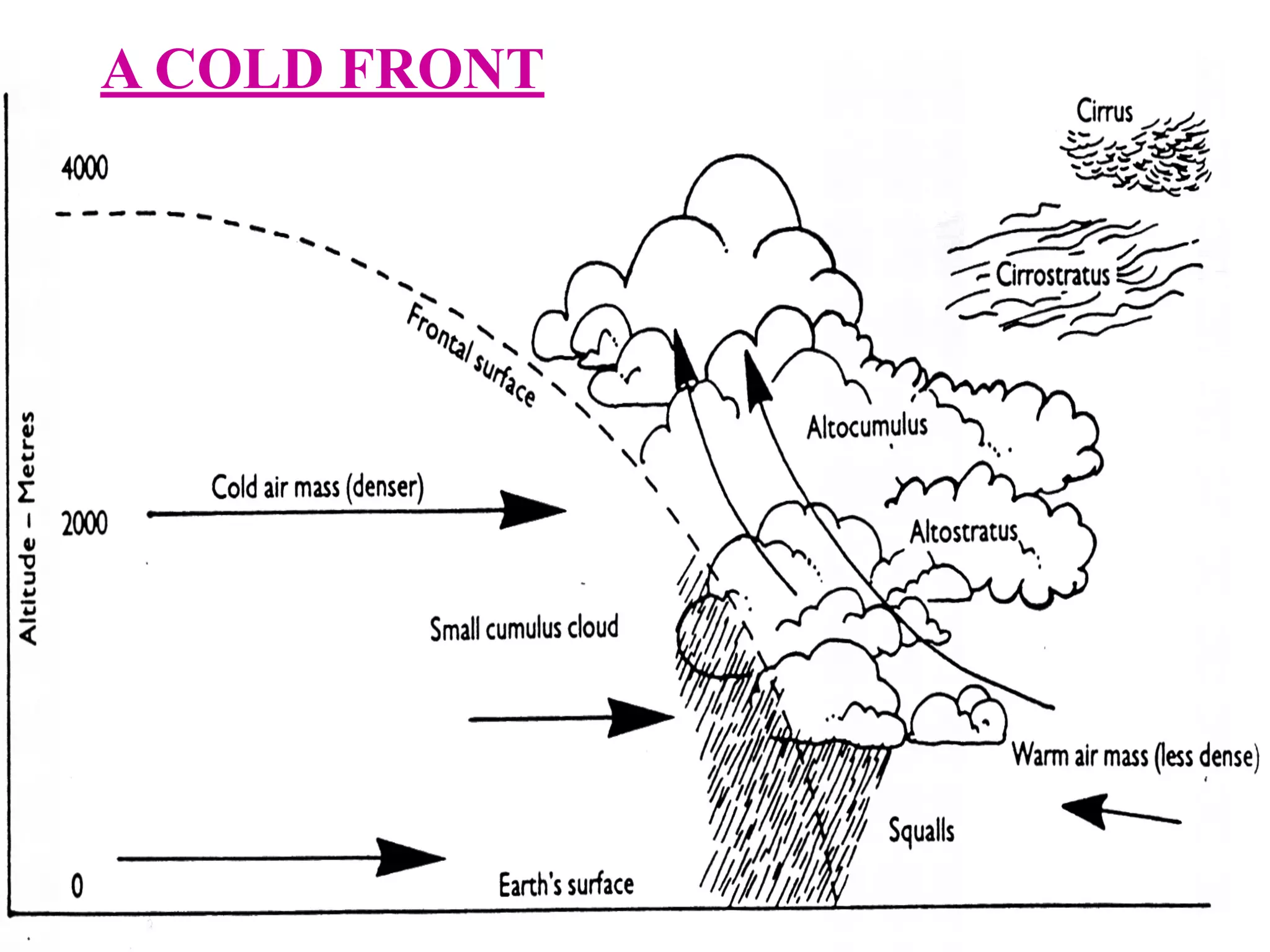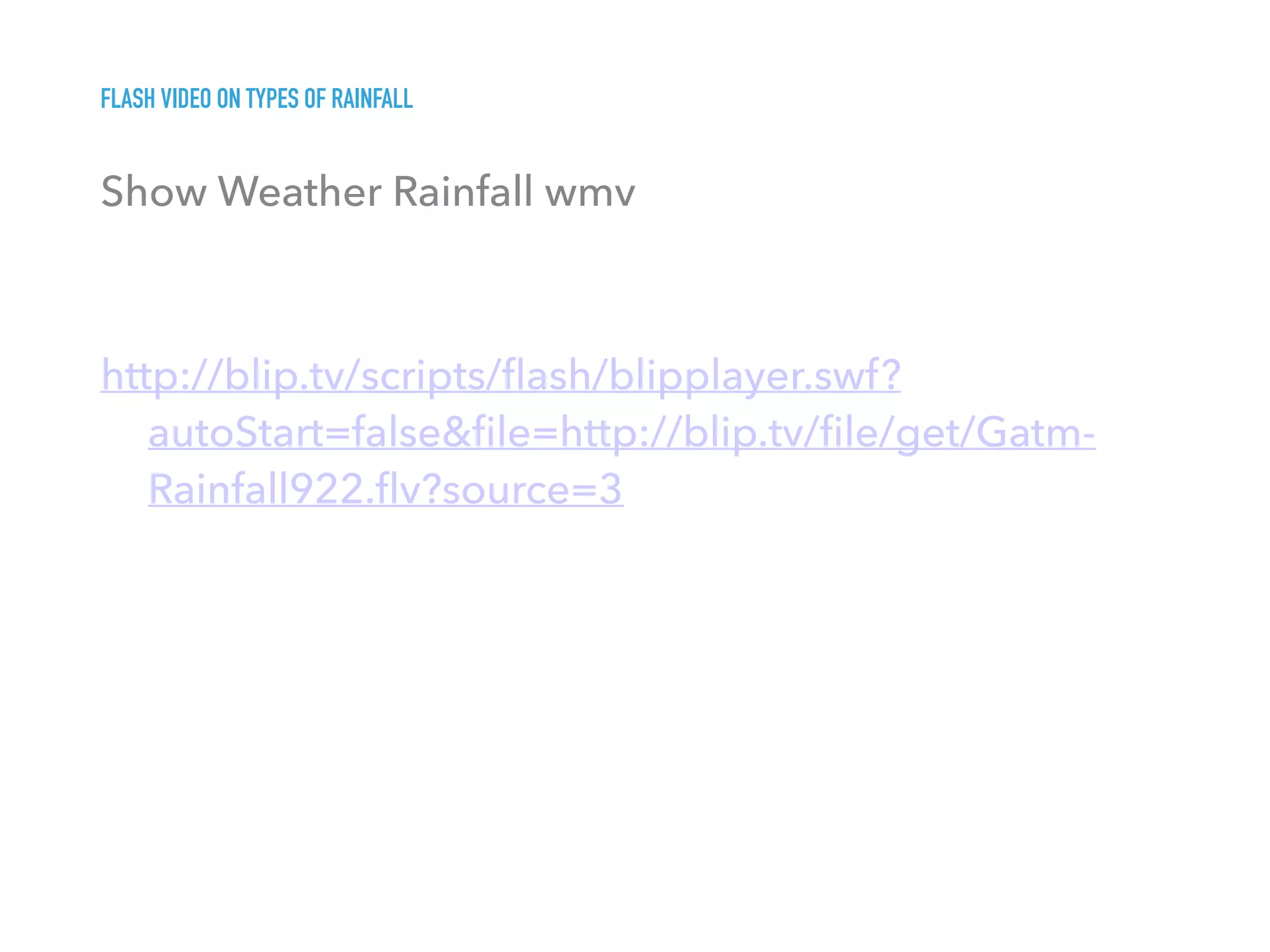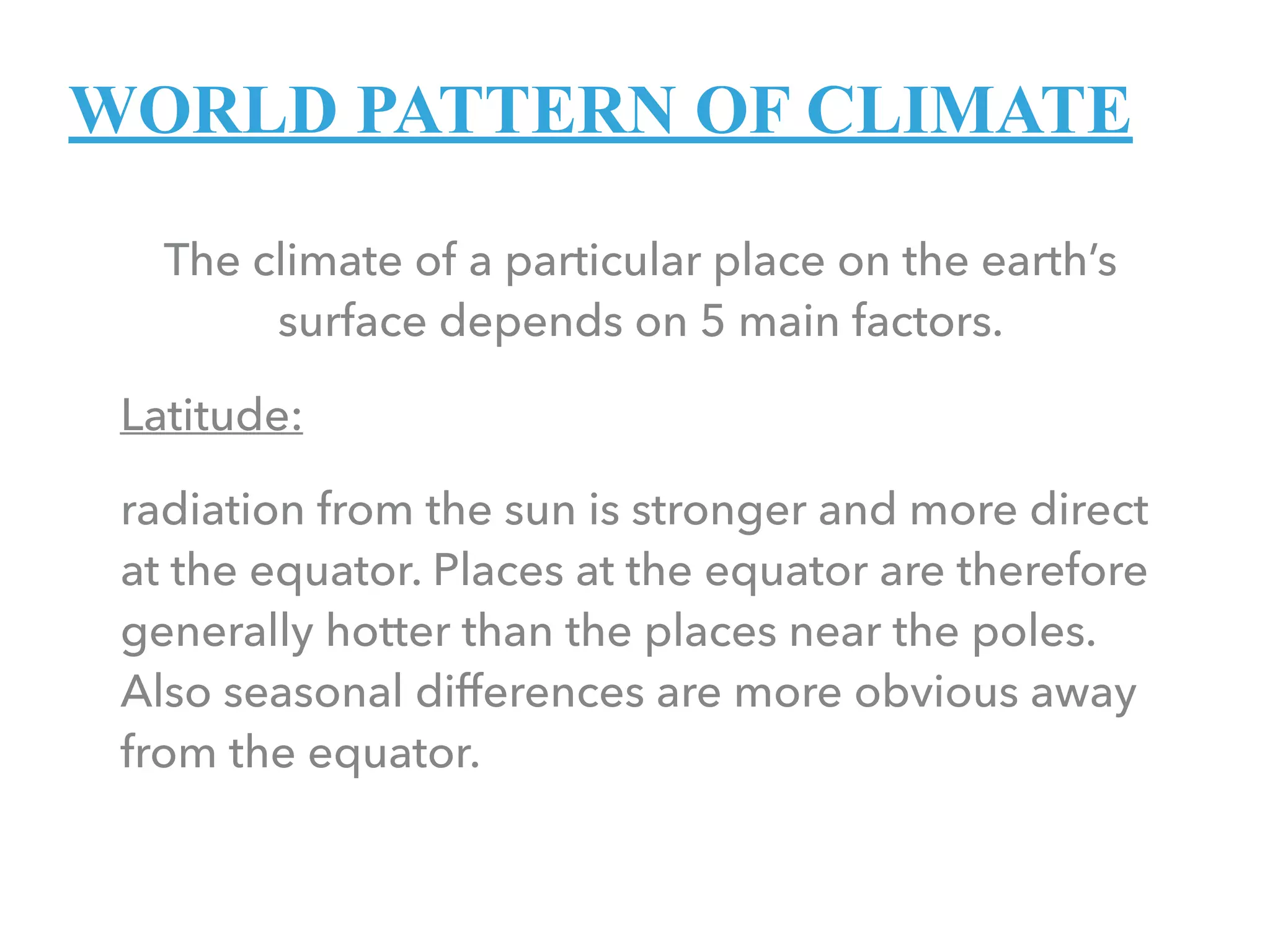The document provides information about weather maps and weather concepts. It discusses key elements of weather maps including isobars, pressure cells, wind direction and speed. It explains that high pressure cells bring clear skies while low pressure cells bring cloud and rain. It also summarizes different types of rainfall including convectional, orographic and frontal rainfall. Seasons are determined by the positioning of pressure systems with lows over northern Australia in summer and highs in winter.

